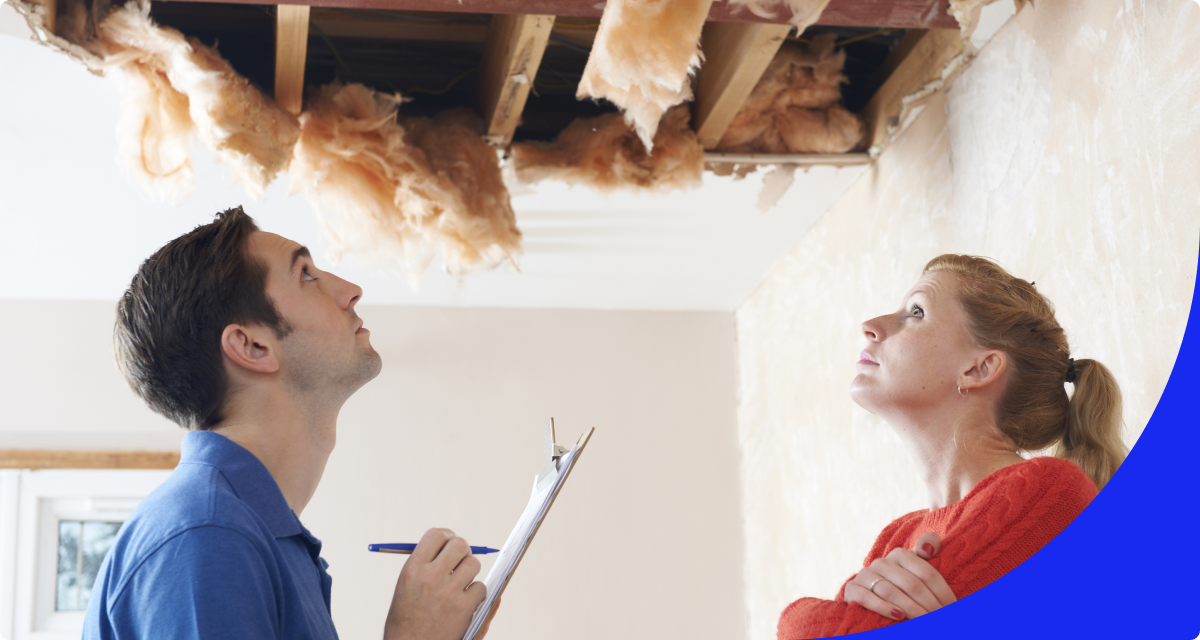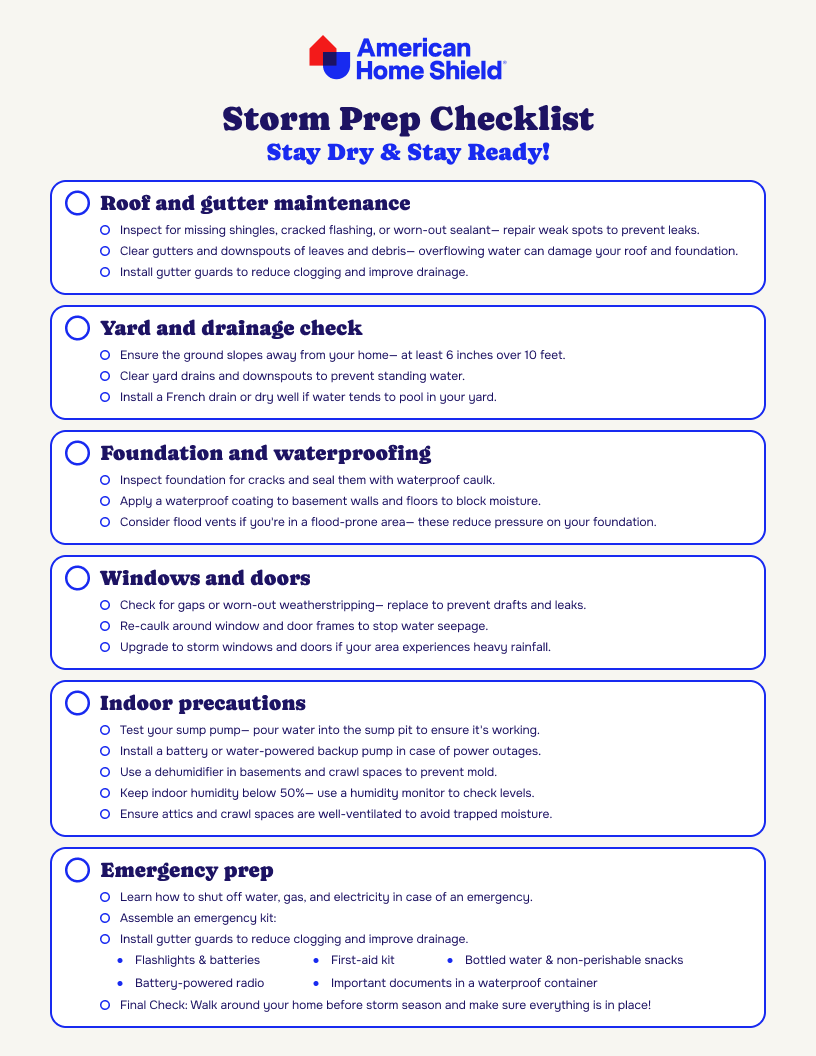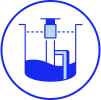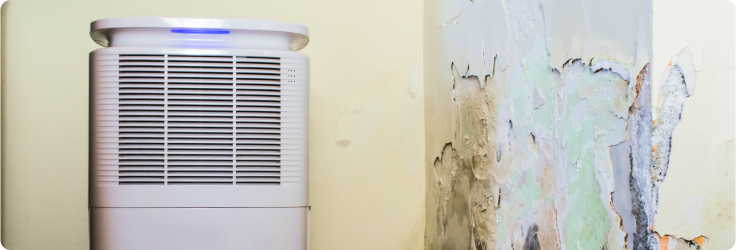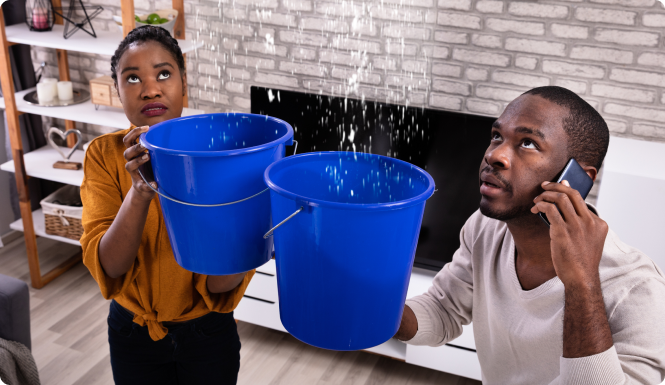From exploring how to avoid the general wear and tear brought on by rain, to how to prevent flooding in the event of a more serious storm, we’ve got the resource for you. Consider this the ultimate guide to the precautions homeowners can take in the event that a harmless drizzle turns into a devastating downpour.
Understanding rainy season risks
A little rain can create a relaxing ambiance for chilling at home. Too much rain, on the other hand, can be incredibly damaging. Here are some risks of heavy rainfall:
Basement leaks
Water loves to take the path of least resistance, and unfortunately, that path might be right into your basement. Whether it’s through foundation cracks or poor drainage, basement leaks can lead to musty odors, mold, and water damage that’s a pain to fix.
Roof leaks
A few missing shingles or a worn-out flashing seal might not seem like a big deal— until a heavy downpour turns your attic into a mini waterfall. Roof leaks can sneak up on you, causing stains, mold, and even structural damage if left unchecked.
Foundation damage
Soil expands when it absorbs water, then contracts when it dries. Over time, this push-and-pull can cause cracks in your foundation, allowing water to seep in and weaken your home’s structural integrity.
Mold growth
Mold thrives in damp, poorly ventilated spaces. If moisture sneaks in and sticks around, mold spores can spread quickly, creating health risks and leaving a funky smell in their wake.
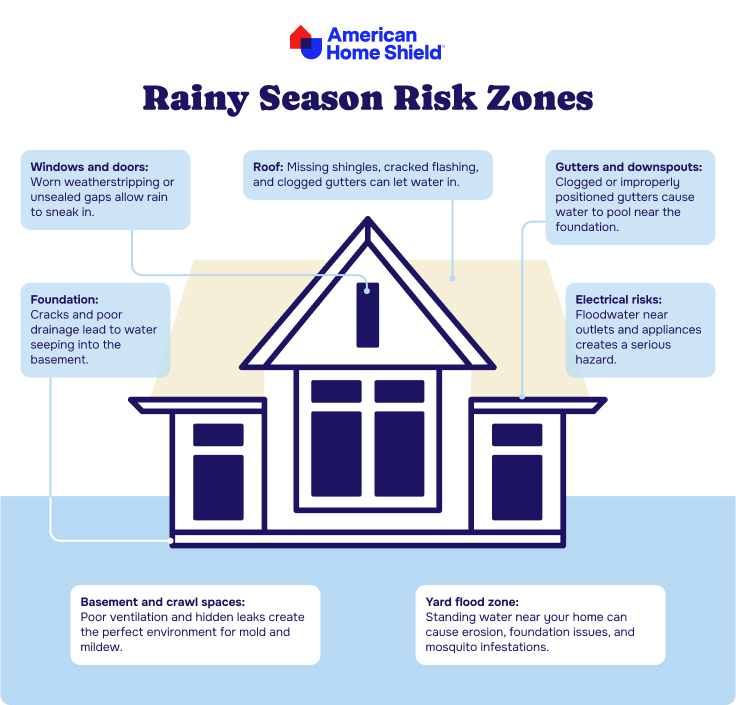
Pre-season prep: Your rain-ready checklist
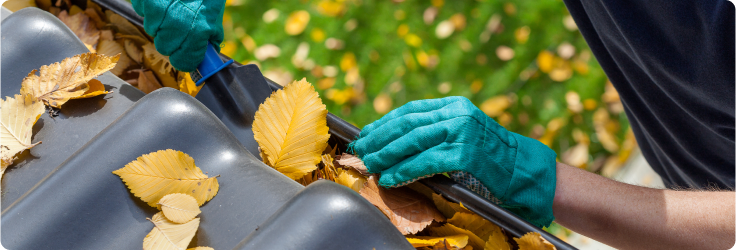
The best way to handle a rainy season is to get ahead of it. Before the storms hit, keep these maintenance tips for how to prevent floods in mind to make sure your home is ready to handle whatever the weather throws at it.
